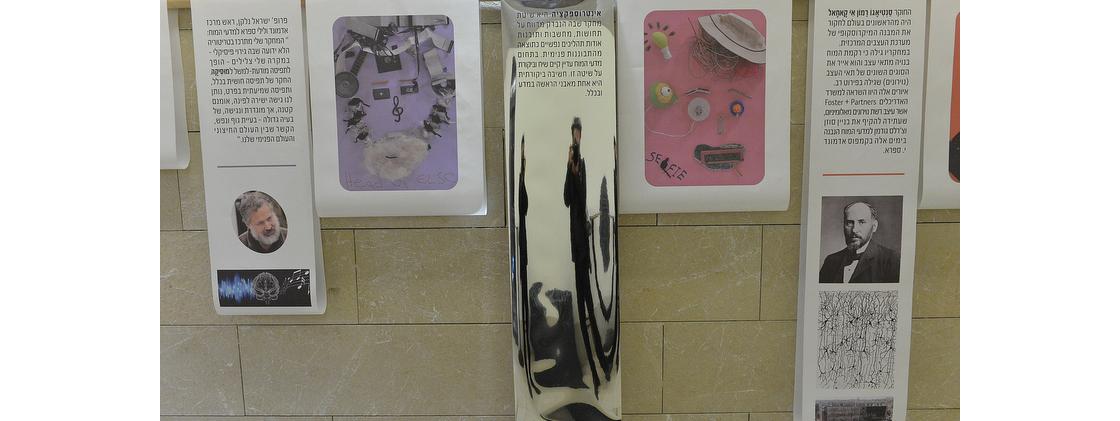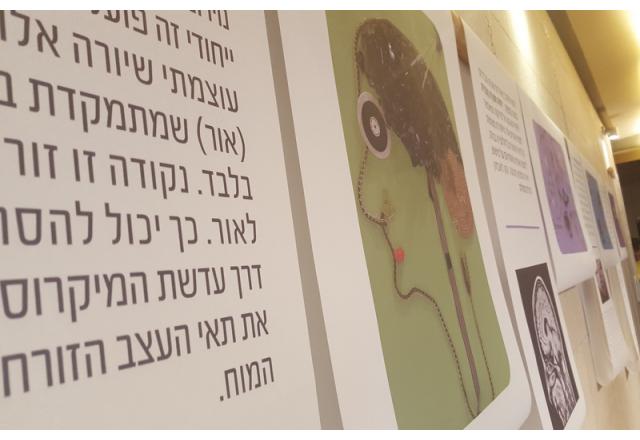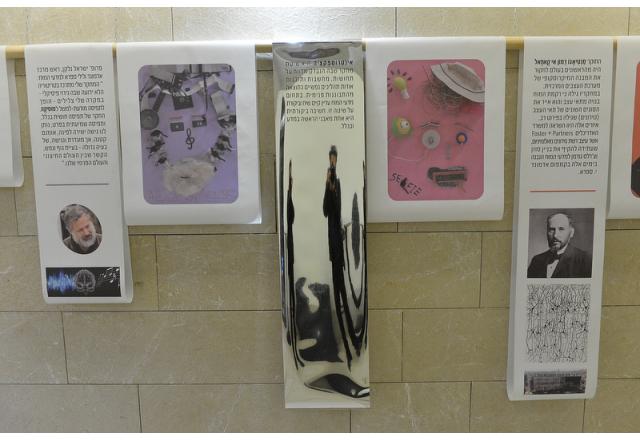The strength of the brain lies in the way the nerve cells that form it work together. Every sensory, motor and even cognitive activity stems from the constant interaction among brain cells. This interaction, in all its ramifications, is the field of study by researchers, from different fields, at the Edmond and Lily Safra Center for Brain Sciences. For one evening, students and researchers joined forces with the artist, Hanoch Piven, who uses everyday objects to characterize iconic figures from the worlds of culture and politics.
Random objects were placed on a clean, colorful slate, thereby taking on a graceful and humorous meaning. By means of collage and assemblage of ready-made materials, the participants created portraits revealing the subject of their research. However, the random is not accidental! Objects such as syringes, mice and microchips, were conjoined with objects from outside the laboratory, thus shedding new light on the thoughts behind the research.
The decoding of the playful art works is done with the aid of images from everyday life in the field of science. The images are presented alongside texts that describe concepts from the world of brain research, advanced research methods, and glimpses into the inner world of scientists.
Enter the creative minds of researchers, learn about their work and see their comical side.
______________________________
The Edmond and Lily Safra Center for Brain Sciences at The Hebrew University of Jerusalem (ELSC) was founded in 2009 with the assistance of the Edmond J. Safra Foundation, as an interdisciplinary center for brain sciences. The center has an innovative and revolutionary research agenda for understanding the brain and its complex products: movement, perception, cognition, language, and creativity. Scientists at ELSC examine the brain from the level of the single neuron to complex human behavior using state-of-the-art scientific equipment and innovative research approaches: nanotechnologies, telemetry, and optogenetics. The unique integration of theoreticians with experimental researchers facilitates the simulation of brain activity using supercomputers utilizing mathematical and physical models to present the brain as an ever-changing, dynamic learning system.






















